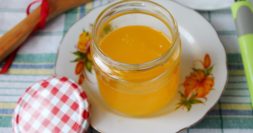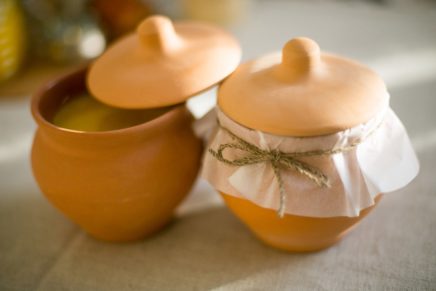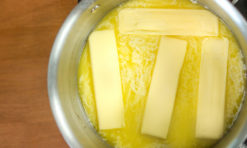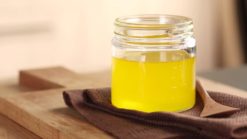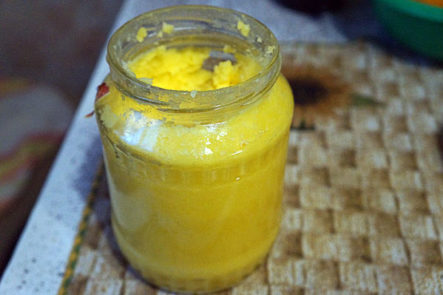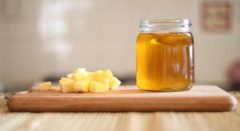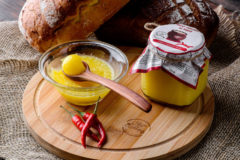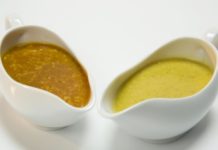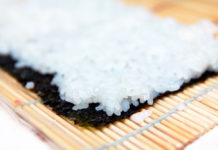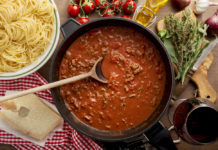Ghee is deservedly popular among many housewives. The product has excellent taste, is very well suited for frying and is actively used in cosmetology. Another plus is that it is easy to cook without any problems yourself and get not only a tasty, but also a harmless product.
So, what is the benefit and is there a potential harm to this product, how to cook it and store it at home?
Material Content:
Ghee: benefits and harms
In fact, such a product is pure milk fat, which is obtained from cow's butter after boiling and boiling. During this treatment, water, milk proteins and sugar leave the initial product. The resulting refined product has a delicate taste and smell, contains useful substances such as vitamin A and PP, trace elements necessary for the coordinated work of the body - potassium, magnesium, iron.
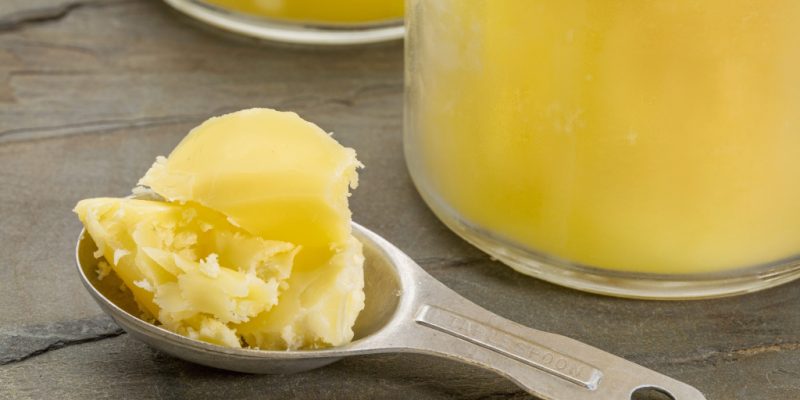
During frying, ghee does not emit carcinogens, on the contrary, it is an antioxidant and helps to remove free radicals from the body.
Food. Cooked using it, it has a more pleasant taste than that prepared using classic creamy.
But with all the advantages, the product has disadvantages:
- Since this is fat, it is forbidden to use it for patients suffering from diseases of the gastrointestinal tract, especially pancreatitis.
- It will also be useless to people with obesity.
- It is also undesirable for patients with diabetes.
- Even healthy people should not abuse them. The maximum rate per day for a healthy adult is not more than 10 grams.
How to make butter ghee
Many housewives have a logical question: how to make ghee at home? There are several ways to melt, but the taste and appearance of the product will vary slightly.
To prepare the classic version, you will need oil with a high percentage of fat content (best homemade), as well as thick-walled dishes. It is not recommended to use aluminum in this particular case - there is a high risk that the product will burn.
Usually, 1 kg of raw material is taken to prepare one portion of the melted product. The output is about 750 grams of melted butter.
The classic recipe is quite simple to execute.
- The butter is cut into small pieces, placed in a container and put on medium heat.
- Once the mass has become liquid and homogeneous, the fire is reduced and the mixture is simmered for about 40 minutes, regularly removing the resulting white foam.
- After that, the fire is turned off, and the resulting oil is poured into pre-prepared clean and dry cans, pre-filtered through a sieve and gauze.
Cooking in a slow cooker
Butter from butter can also be obtained using a slow cooker.
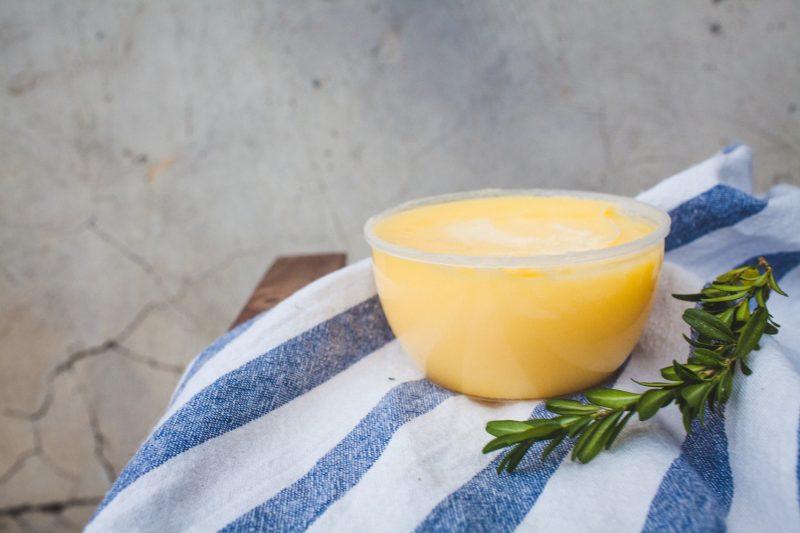
For this:
- The required amount of the original product should be cut into small pieces and put into the bowl of the device, set to "Extinguishing".
- Once the whole product has melted, the temperature is reduced by 100 degrees. It must be remembered that during the entire cooking process, the unit cover must not be closed.
- The product is simmered for no more than 2 hours, periodically removing foam and stirring.
The resulting oil is poured into clean containers. The result is a honey-yellow product.
How to make in the oven
This technique is good in cases where you need to prepare a large amount of product. It is important to remember that processing a pound of oil in this way will take about an hour and a half.
- The oven is preheated to 150 degrees, put dishes with thick walls in it, put the right amount of oil. It is important to ensure that at least 8 cm remains to the edge, then the languishing mass will not splash much.
- The product is simmered until it becomes transparent, with an amber tint. A film should form on the surface of the mixture.
- After that, the dishes are pulled out of the oven, the film is carefully removed with a slotted spoon, and the contents are filtered through cheesecloth and poured into clean jars.
Ghee Ghee
Such a product is used not only for cooking, but also in personal care. All kinds of masks for face and hair are made on its basis.

The final product has a subtle aroma with a nutty touch. It takes longer to cook than ghee according to the classic recipe, but the result is worth it.
- Butter is placed in a thick-walled pan and allowed to melt over medium-low heat, mix.
- As soon as the mixture begins to boil, the fire is made weak, but the boiling should not stop.
- The resulting foam is carefully removed with a slotted spoon, the product is not mixed. It is important to carefully monitor when the actual fat, milk protein and water separate in the mixture. The latter will be on top and evaporate quickly.
- Now it’s important to keep track of the protein. It will settle to the bottom in the form of a white precipitate. As soon as the color begins to change from whitish to golden, the fire is turned off, and the resulting high-quality fat is filtered through a sieve and several layers of gauze in clean jars. It is very important not to miss this moment. If the protein starts to burn - the taste of the product will be spoiled, it can not be used in food.
With the addition of black pepper
Such a product has a bitter taste and pronounced aroma. For this, one and a half kilograms take 2 - 3 tablespoons of black pepper peas. The spice is wrapped in gauze and added to the mixture at a time when it has already melted, but has not yet begun to boil. After this, the product is prepared as usual, before filtering, remove the pepper.
How to store ghee at home
Ghee has a long shelf life.At room temperature, it can be stored for up to six months. In hermetically sealed glass containers in the refrigerator - no more than 3 years.
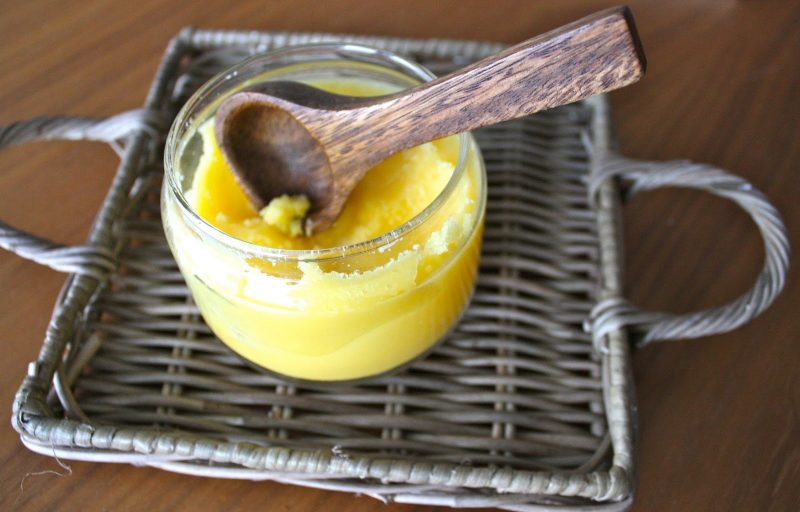
Storage of the product in the freezer is allowed - it should be laid out in plastic containers with a tight-fitting lid.
An important addition - the product is always taken out of the can with a clean, dry spoon, this precaution will help extend its shelf life.
Preparing ghee from butter is not at all difficult. It is important to strictly follow the recipe and temperature conditions in order to get not only a tasty, but also a healthy product that will appeal to the whole family.


